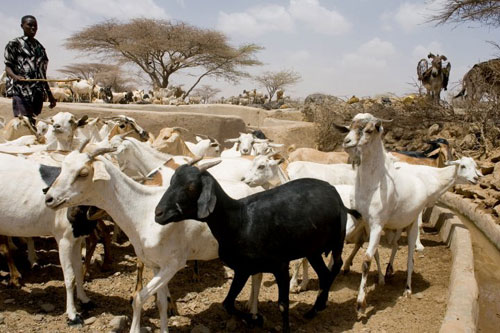UN agency mobilizing support to help DR Congo tackle livestock epidemic
The United Nations Food and Agriculture Organization (FAO) is mobilizing urgent support to help the Democratic Republic of the Congo (DRC) tackle the spread of a powerful livestock disease that has already killed 75,000 goats and threatens neighbouring countries.

Peste des Petits Ruminants (PPR) poses a huge threat to the livelihood of small farmers and herders.
The DRC authorities say tens of thousands of goats have been infected by peste des petits ruminants (PPR), while another one million goats and 600,000 sheep are at risk of contracting the disease.
“This is the worst livestock epidemic in the country in more than 10 years,” the FAO Representative in DRC, Ndiaga Gueye, said in a news release.
“We’re seeing that in response to the threat of their animals contracting the disease, farmers are moving their animals away from infected villages to where so far there have been no disease outbreaks, which has been spreading the virus to healthy flocks of animals,” Mr. Gueye added.
A recent emergency mission by FAO and the World Organisation for Animal Health (OIE) reported that the current outbreaks are particularly lethal, with an 86 per cent mortality rate in goats, according to FAO.
The agency has an emergency project that will provide funds for vaccinating 500,000 sheep and goats in areas not yet affected by the disease, raising awareness via rural radio and village-level meetings to educate farmers about steps they can take to prevent PPR, and increasing active surveillance for PPR throughout the area, among other measures.
In addition to DRC, neighbouring countries Gabon, the Republic of Congo, Kenya and Tanzania are also affected by the disease, and some areas are considered to be endemic.
PPR is considered the most destructive viral disease affecting small flocks, on par with rinderpest, a deadly cattle plague that has wreaked havoc on agriculture for millennia, resulting in famine and economic destruction.
The disease can cause death rates of up to 100 per cent in sheep and goats, and while it does not affect humans, the disease can cause enormous socio-economic losses.
Source: UN NEWS
- 425 reads
Human Rights
Ringing FOWPAL’s Peace Bell for the World:Nobel Peace Prize Laureates’ Visions and Actions

Protecting the World’s Cultural Diversity for a Sustainable Future

The Peace Bell Resonates at the 27th Eurasian Economic Summit

Declaration of World Day of the Power of Hope Endorsed by People in 158 Nations

Puppet Show I International Friendship Day 2020

